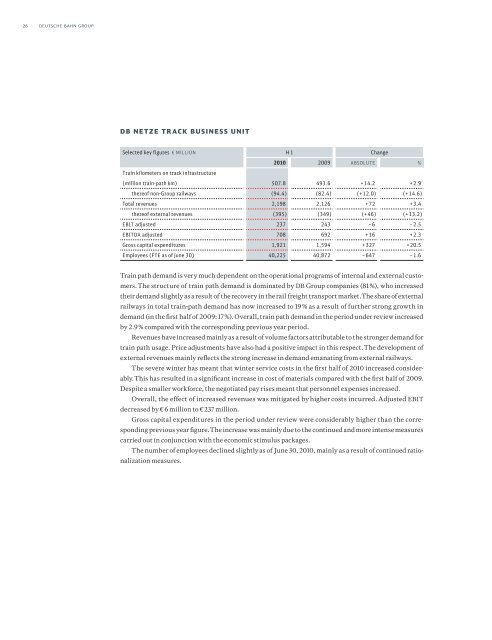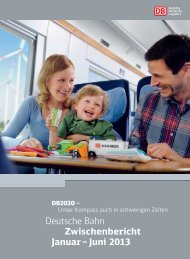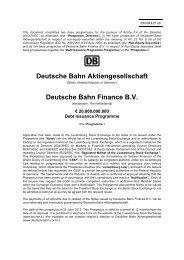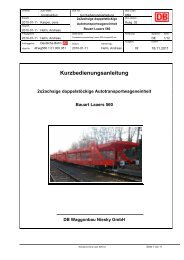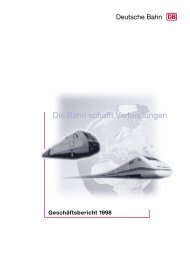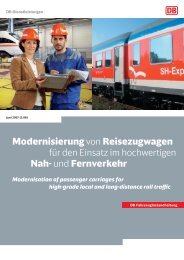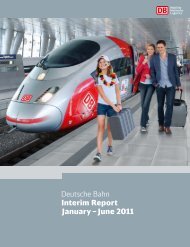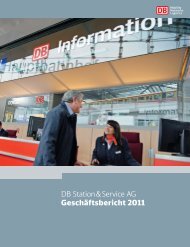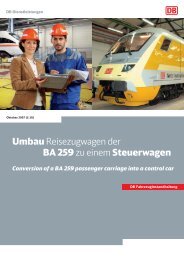Create successful ePaper yourself
Turn your PDF publications into a flip-book with our unique Google optimized e-Paper software.
26<br />
<strong>Deutsche</strong> bahn group<br />
DB NETZE TRACK business unit<br />
Selected key figures € million H 1 Change<br />
2010 2009 absolute %<br />
Train kilometers on track infrastructure<br />
(million train-path km) 507.8 493.6 + 14.2 + 2.9<br />
thereof non-Group railways (94.4) (82.4) (+ 12.0) (+ 14.6)<br />
Total revenues 2,198 2,126 + 72 + 3.4<br />
thereof external revenues (395) (349) (+ 46) (+ 13.2)<br />
EBIT adjusted 237 243 – 6 – 2.5<br />
EBITDA adjusted 708 692 + 16 + 2.3<br />
Gross capital expenditures 1,921 1,594 + 327 + 20.5<br />
Employees (FTE as of June 30) 40,225 40,872 – 647 – 1.6<br />
Train path demand is very much dependent on the operational programs of internal and external customers.<br />
The structure of train path demand is dominated by DB Group companies (81 %), who increased<br />
their demand slightly as a result of the recovery in the rail freight transport market. The share of external<br />
railways in total train-path demand has now increased to 19 % as a result of further strong growth in<br />
demand (in the first half of 2009: 17 %). Overall, train path demand in the period under review increased<br />
by 2.9 % compared with the corresponding previous year period.<br />
Revenues have increased mainly as a result of volume factors attributable to the stronger demand for<br />
train path usage. Price adjustments have also had a positive impact in this respect. The development of<br />
external revenues mainly reflects the strong increase in demand emanating from external railways.<br />
The severe winter has meant that winter service costs in the first half of 2010 increased consider -<br />
ably. This has resulted in a significant increase in cost of materials compared with the first half of 2009.<br />
Despite a smaller workforce, the negotiated pay rises meant that personnel expenses increased.<br />
Overall, the effect of increased revenues was mitigated by higher costs incurred. Adjusted EBIT<br />
decreased by € 6 million to € 237 million.<br />
Gross capital expenditures in the period under review were considerably higher than the corresponding<br />
previous year figure. The increase was mainly due to the continued and more intense measures<br />
carried out in conjunction with the economic stimulus packages.<br />
The number of employees declined slightly as of June 30, 2010, mainly as a result of continued rationalization<br />
measures.


